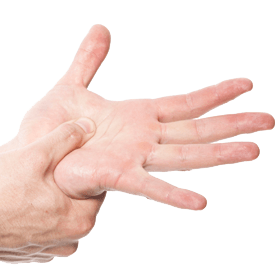SCAR REVISION SURGERY
Even after a wound heals, a scar can serve as a constant reminder. Scars can be located virtually anywhere on the body and can take on a variety of forms, shapes, and sizes with some being more prominent and noticeable than others. When a scar is causing undue anxiety or physical limitations, the plastic surgeons of the Aesthetic Center of Gainesville can perform scar revision surgery. The surgery is intended to improve the appearance of the scar by making it less visible. With any type of surgery there are limitations and scar revision surgery is no exception. It’s important for a patient to understand that while the appearance of the scar will be greatly improved, it will not completely vanish.
- 🛈 OVERVIEW
Even after a wound heals, a scar can serve as a constant reminder. Scars can be located virtually anywhere on the body and can take on a variety of forms, shapes, and sizes with some being more prominent and noticeable than others. When a scar is causing undue anxiety or physical limitations, the board-certified plastic surgeons of the Aesthetic Center of Gainesville can perform scar revision surgery. The surgery is intended to improve the appearance of the scar by making it less visible. With any type of surgery there are limitations and scar revision surgery is no exception. It’s important for a patient to understand that while the appearance of the scar will be greatly improved, it will not completely vanish.
- ✔ TYPES OF SCARS
Since scars come in a large variety, it’s important to understand the difference between them. Common scars include:
Superficial
These scars are the least visible of all the scars and don’t cause any real issue. They can usually be treated with topical creams.
Keloid
These scars arise from the overly aggressive healing of a wound and they take on a thick, clustered, and raised scar appearance.
Hypertropic
These scars develop from excessive tissue developing after a wound and have a raised or elevated appearance.
Contracture
These scars occur after a burn and can lead to a tightening of the skin, where it can become difficult to move the area.
Acne
These scars are a result of acne that has previously healed but has left marks and are usually found on the face.
- ✔ SURGICAL TECHNIQUE
Prior to any surgery, your surgeon will thoroughly examine your scar to determine the best course of treatment. Surgical techniques can include:
Shave Excision
A surgical shaver is used to carefully shave off raised sections of a scar to make the surface more even and to blend in with the surrounding skin. Afterwards, the scar will be left looking smoother and flatter for a less visible appearance.
Scar Removal/Modification
For raised scars, an elliptical removal pattern can be utilized, where the scar and an ellipse (edging) of skin around the scar is removed to create a clean enclosure. Stitches are used to close the wound. If a previous wound was closed poorly and resulted in a scar, a modification is needed. The scar will be reopened and the skin will be re-stitched in a different direction. This will minimize the appearance of the scar.
Skin Grafting/Tissue Expansion
When a scar is especially large, skin grafting can be used. In the procedure, skin is taken from another area of the body to close the wound created by scar removal. Stitches are placed carefully around the grafted skin to allow it to blend in with the nearby skin during healing.
In some cases, tissue expansion is utilized, where a tissue expander is placed in the skin beneath the scar. The area will be filled with a sterile solution to stretch out the skin. When the skin stretches enough, the edges will be joined and stitched together.
Injectable Treatments
For depressed scars, the appearance can be improved with injectable fillers. Collagen is commonly used or various dermal fillers that are used for volumizing purposes. Fillers are a quick and simple treatment that are injected with a syringe directly into the skin.
Cosmetic Treatments
For certain scars, a number of cosmetic treatments can be used to reduce visibility. These can include chemical peels, dermabrasion, laser skin resurfacing, and more to even out texture and tone.
- ✔ DURING/AFTER SURGERY
The type of anesthesia used during surgery will depend on the technique used. While most surgeries will utilize local anesthesia, more extensive surgeries will require general anesthesia. Following the surgeon’s instructions after surgery is critical to obtain successful results. This requires following a daily scar treatment regimen to fully heal the wound site. It’s also important to protect the treatment site from sun exposure, so the area won’t get discolored.
- ✔ ERASE THE LOOK OF SCARS
Nobody wants to deal with the unsightly appearance of scars and now you don’t have to when you choose scar revision surgery. Our office offers various techniques that are sure to improve the look of a scar on anywhere on your body. To see if you qualify for scar revision surgery, just pick up the phone and give our office a call for a consultation.

Slide title
Excellent care! - He is the best....your search will stop when you meet him!"
- Anonymous / Vitals / Jun 01, 2018
Button
Slide title
"Thank you everyone very much! VERY PLEASED!!"
- anonymous / Office Visit / Feb 28, 2017
Button
Slide title
"Dr. Campbell is an amazing doctor. I went yesterday to get a lift and BA. His team is excellent and he is a perfectionist. He listened to what I wanted and was flexible to changes. I consulted with 2 other...
- S.M. / Healthgrades / Jun 05, 2018
Button
Slide title
"Dr. Campbell is an amazing doctor. I went yesterday to get a lift and BA. His team is excellent and he is a perfectionist. He listened to what I wanted and was flexible to changes. I consulted with 2 other...
- S.M. / Healthgrades / Jun 05, 2018
Button
REQUEST CONSULTATION
We will get back to you as soon as possible.
Please try again later.




